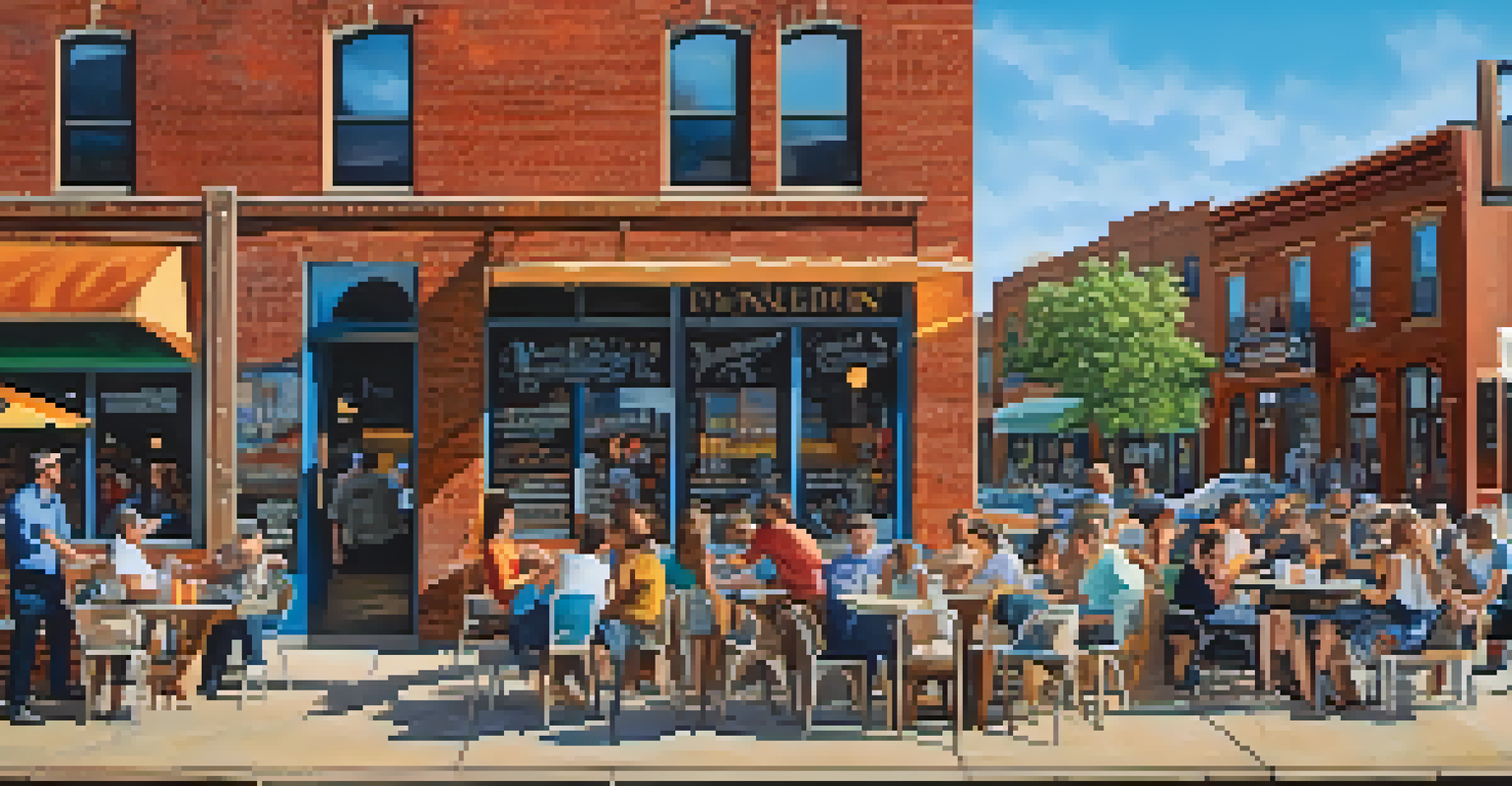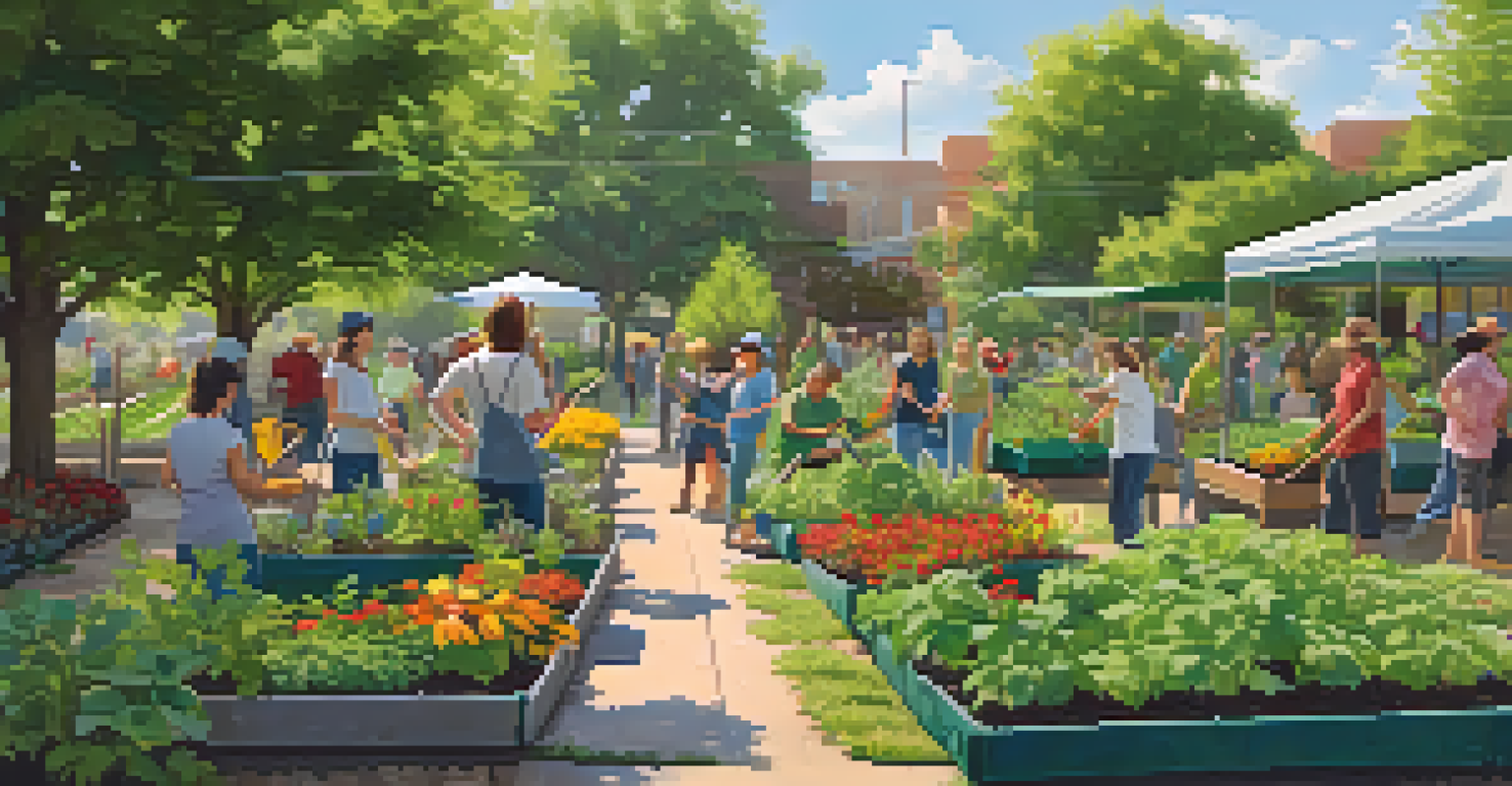Exploring Dallas Historic Neighborhoods: Revitalization Trends

The Charm of Dallas' Historic Neighborhoods
Dallas is home to a rich tapestry of historic neighborhoods, each with its own unique story. From the architectural beauty of the Victorian homes in the Munger Place Historic District to the vibrant streets of Deep Ellum, these areas offer a glimpse into the city’s past. Their charm is not just in the buildings but also in the communities that have grown around them, making them desirable places to live and work.
Preservation is the key to the future of our past.
These neighborhoods often possess a character that modern developments lack. The tree-lined streets, local shops, and historical landmarks create an inviting atmosphere that attracts both residents and visitors. Moreover, the sense of community in these areas fosters lasting connections among neighbors, often leading to neighborhood events that celebrate their shared history.
As urban living gains popularity, more people are seeking the authenticity that comes from residing in historic neighborhoods. This trend has sparked an interest in preservation efforts, ensuring that these vibrant areas maintain their charm while adapting to contemporary needs.
Understanding Revitalization Trends
Revitalization refers to the process of improving and renewing urban areas, and it's particularly evident in Dallas' historic neighborhoods. Over the past few years, we’ve seen an influx of investment aimed at restoring old buildings and enhancing public spaces. This trend not only breathes new life into these neighborhoods but also attracts a diverse mix of residents and businesses.

One of the key factors driving this revitalization is the desire for sustainable living. Many projects focus on eco-friendly practices, incorporating green spaces and energy-efficient designs. This commitment to sustainability resonates with younger generations who prioritize environmental responsibility, making these neighborhoods even more appealing.
Historic Neighborhoods Thrive
Dallas' historic neighborhoods combine charm and community, drawing residents and visitors alike.
Additionally, local governments and organizations are playing a crucial role in supporting revitalization initiatives. By offering incentives for restoration and promoting community involvement, they help ensure that the unique character of these neighborhoods is preserved while still making room for innovation.
The Role of Local Businesses in Revitalization
Local businesses are the lifeblood of Dallas' historic neighborhoods, driving both economic growth and community engagement. From quaint coffee shops to unique boutiques, these establishments not only provide services but also enhance the overall atmosphere of these areas. Their presence encourages foot traffic, which benefits other businesses and fosters a sense of community.
Historic neighborhoods are a living testament to our culture and identity.
Moreover, local entrepreneurs often prioritize sourcing products and services from within the neighborhood, creating a cycle of support that strengthens the local economy. This interconnectedness helps maintain the area’s character while bringing in modern amenities that residents love. For example, a locally owned restaurant might source fresh produce from a nearby farm, highlighting the community's commitment to sustainability.
As these neighborhoods continue to thrive, we can expect to see even more innovative businesses emerge, further enriching the cultural fabric of Dallas. This symbiotic relationship between local businesses and the community is a key ingredient in the ongoing revitalization efforts.
Community Involvement in Preservation Efforts
Community involvement is essential in preserving the character of Dallas' historic neighborhoods. Residents often come together to form neighborhood associations that advocate for preservation and improvement projects. These groups play a vital role in ensuring that the voices of local residents are heard in planning discussions, which helps maintain the unique identity of these areas.
In addition to advocacy, many residents participate in volunteer efforts aimed at beautifying their neighborhoods. Whether it’s organizing clean-up days, planting community gardens, or hosting block parties, these activities foster a sense of pride and ownership. This hands-on approach not only enhances the physical environment but also strengthens community bonds.
Revitalization Balances Old and New
Efforts to revitalize these areas focus on preserving historic character while introducing modern amenities.
Furthermore, educational initiatives are often implemented to raise awareness about the history and significance of these neighborhoods. Workshops, guided tours, and local history events serve to engage both residents and visitors, promoting a deeper understanding of what makes these areas special.
Challenges Facing Historic Neighborhoods
Despite the positive trends in revitalization, Dallas' historic neighborhoods face several challenges. One significant issue is gentrification, where rising property values and rents can displace long-time residents. This phenomenon often leads to a loss of the cultural diversity that originally defined these communities, raising concerns about inclusivity.
Another challenge is the balance between modernization and preservation. As developers seek to capitalize on the popularity of these neighborhoods, there’s a risk that new constructions may overshadow or clash with historic buildings. Striking the right balance is crucial to maintaining the charm and character that make these areas appealing.
Additionally, ongoing maintenance and preservation of older buildings can be costly, requiring commitment from both private and public sectors. Securing funding and resources for these efforts remains a challenge, as many neighborhoods strive to keep their historic integrity intact while also upgrading infrastructure and amenities.
Spotlight on Notable Revitalization Projects
Several notable revitalization projects in Dallas exemplify the trend of blending the old with the new. One such project is the renovation of the historic Continental Gin Building in Deep Ellum, which has transformed into a vibrant mixed-use space. This project has not only preserved the building's historical significance but also provided modern offices, retail, and event spaces that attract a diverse crowd.
Another example is the revitalization of the Fair Park area, home to the Texas State Fair. Efforts to restore historic structures and improve public spaces have turned this area into a year-round destination. By enhancing accessibility and incorporating green spaces, the project promotes both recreation and community engagement.
Community Drives Preservation
Active resident involvement in advocacy and beautification projects is crucial for maintaining the identity of these neighborhoods.
These revitalization efforts demonstrate that it’s possible to honor the past while paving the way for a dynamic future. Such projects serve as a model for other neighborhoods looking to balance preservation with modernization, showcasing the potential for growth in Dallas' historic areas.
The Future of Dallas' Historic Neighborhoods
Looking ahead, the future of Dallas' historic neighborhoods appears promising. With a strong emphasis on community involvement and sustainable practices, these areas are poised to continue thriving. As more people recognize the value of preserving history while fostering innovation, we can expect to see ongoing support for revitalization efforts.
Technological advancements also hold the potential to enhance the livability of these neighborhoods. Smart city initiatives, which incorporate technology into urban planning, can improve everything from traffic flow to energy efficiency. By leveraging technology in a thoughtful way, historic neighborhoods can maintain their charm while adapting to the needs of modern residents.

Ultimately, the future of these neighborhoods will depend on collaboration among residents, businesses, and local government. By working together, they can ensure that Dallas' historic neighborhoods remain vibrant and relevant spaces, celebrating their past while embracing the opportunities of tomorrow.